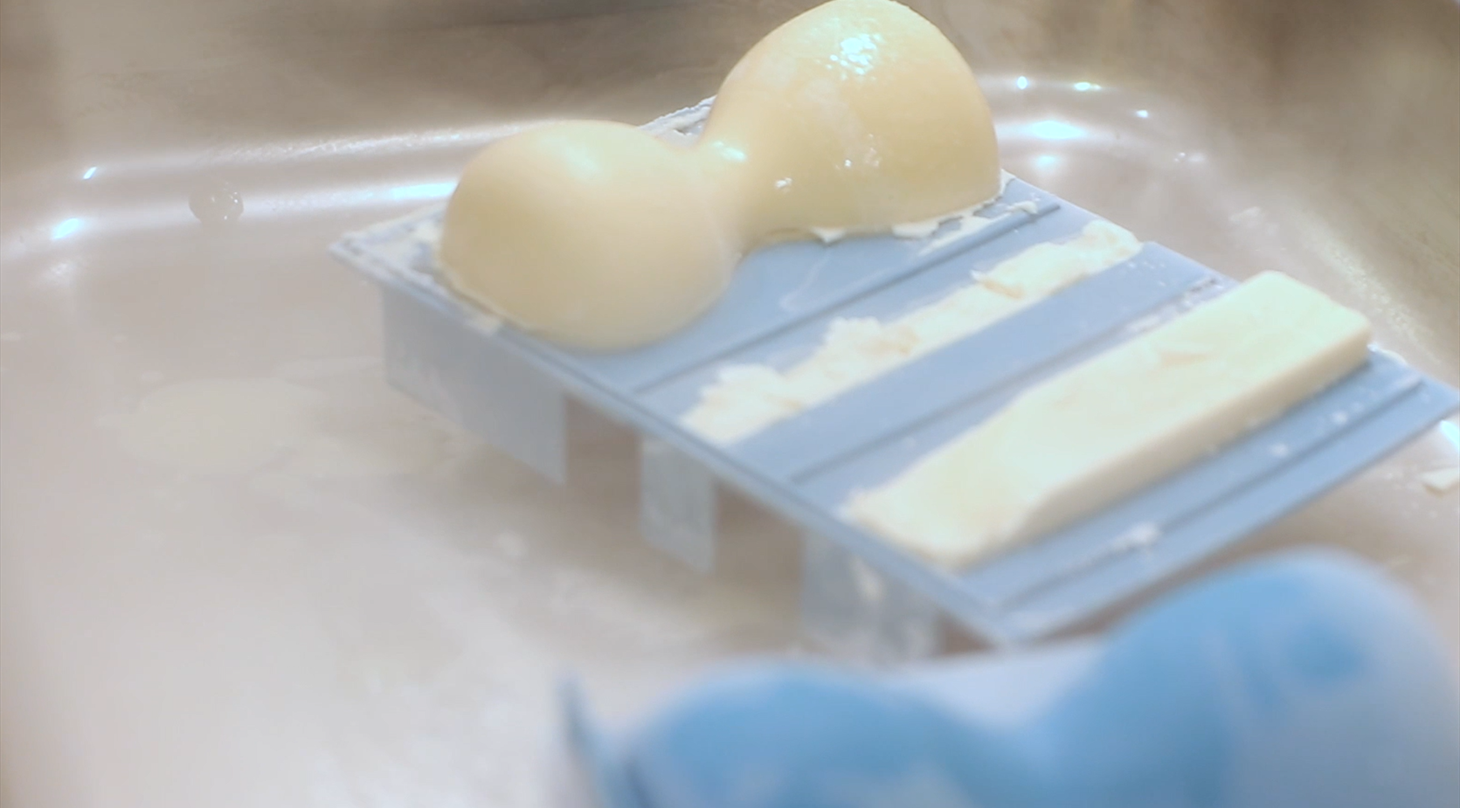
Ice-cold breakthrough: Melt Corp achieves successful material test with 3D printing
It is possible to make plastic and liquid nitrogen work together - with 3D printing as the secret ingredient. "This is absolutely fantastic," says the startup company that plans to use plastic molds to freeze innovative products like shakes and juices.
A "popsicle" transforms into a smoothie.
The startup Melt Corp. develops and manufactures freezable products - and by simply adding water, their products can transform from frozen to liquid foods, such as shakes and juices. However, they faced a complex challenge: designing the mold for their popsicles so the result is both elegant and functional.
The challenge revolved around the use of stainless steel in the production process with liquid nitrogen, which was not performing optimally. Therefore, Melt Corp. entered a MADE Demonstration Project with the Danish Technological Institute to test alternative materials and improve both the design and production process.
And it paid off.
Experiments with new materials
The project involved testing a specific material: blue metal-detectable plastic, which was 3D printed into the desired molds. The project included a series of advanced tests, such as tensile tests and thermal stress tests, where the material was subjected to extreme temperatures—from icy liquid nitrogen to 80°C hot water.
The results demonstrated that the combination of plastic and nitrogen was not only feasible but also an effective and durable solution. Various thicknesses, variants, and designs were tested to ensure the material met Melt Corp's requirements.
It is absolutely fantastic that the project tests showed plastic and nitrogen work brilliantly together. This is groundbreaking for everyone involved in the project
- Serge Silveria, Melt Corp.
The project proved that plastic and nitrogen could work together in a way that opens up new design possibilities and production methods.
- It is important for us as a startup company with an unconventional idea that organizations like MADE exist, and that institutions like the Danish Technological Institute are ready to step in and help when faced with challenges that need solving, explains Serge Silveria, founder and CCO of Melt Corp.
About MADE demonstration projects
With a MADE Demonstrations Project, a small or medium-sized company can receive up to 100,000 DKK in support to solve a specific challenge in the company or test a new technology in production.
By being connected with the Danish Technological Institute, FORCE Technology, Alexandra Institute, or DAMRC, one gains access to the technologies, knowledge, and expertise necessary to address the specific challenge in the company. This can be within materials or production.
MADE demonstration projects are co-financed by the European Regional Development Fund and the Danish Executive Board for Business Development and Growth. Would you like to hear more about the opportunities to test and demonstrate new solutions in MADE? Please reach out to MADE - they cover all of Production Denmark.
This article is originally published by MADE
